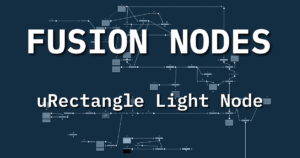How I Archive & Restore DaVinci Resolve Projects (And Never Lose Media)
Seeing “Media Offline” on my timeline is one of the quickest ways to ruin my day when editing in DaVinci Resolve. Whether it’s trying to open an old project, moving files around, or handing off work to someone else, lost media links are a major headache. That’s why mastering DaVinci Resolve’s Project Archiving and Restoring feature is absolutely essential in my workflow.
It’s more than just saving my project file; it’s creating a complete, self-contained package of my entire creative work. This includes the project file itself, every single piece of media used – video clips, audio files, graphics, even subtitle tracks – bundled together in one place.
I rely on this powerful tool for two main reasons:
- Robust Long-Term Backup: It’s my go-to method for creating a definitive, complete backup of an entire project. I know that if I need to open that project again in months or years, I’ll have every single file required, exactly as it was when I finished.
- Seamless Offline Transfer: When I need to send a project to another editor who isn’t using the same shared storage or Blackmagic Cloud, archiving is the perfect solution. I can hand them a single .dra folder containing everything they need, guaranteeing they can open and work on the project without any missing media issues.
While Blackmagic Cloud is fantastic for online collaboration, archiving gives me the control and certainty I need for physical backups, moving projects between my own systems, or whenever I need a guaranteed complete snapshot offline.
Let me show you the straightforward process I follow.
Archiving Your DaVinci Resolve Project (Bundling Everything)
Creating this comprehensive project and media bundle is surprisingly simple:
- I start by opening the Project Manager in DaVinci Resolve.
- I locate the project I want to archive, right-click on it, and select Export Project Archive.
- DaVinci Resolve asks me where I want to save the archive. I always choose a location with plenty of free space, as this process makes a copy of all the media used in the project.
- Next, I get an option to include Render Cache and Proxy Media in the archive. I often choose to include these if they’re being actively used and I want to potentially save time regenerating them when the project is restored. It’s optional, but can boost performance immediately upon restoring.
- Clicking OK starts the process.
DaVinci Resolve then creates a folder with a .dra extension. This is my project archive. It’s important to understand it’s a directory, not a single file. Inside, I find subdirectories containing all the media files, often mirroring their original folder paths, which can be a useful reference point.
Restoring a DaVinci Resolve Project Archive
Getting a project back from an archive is just as easy:
- First, I copy the .dra archive folder to the drive I plan to work from.
- I open the Project Manager in DaVinci Resolve.
- I right-click anywhere in the Project Manager area and select Restore Project Archive.
- I navigate to and select the .dra archive folder I just copied.
- Resolve will prompt me to enter a unique project name for the restored project.
- Click OK.
The project is then added to my Project Manager. The best part is that since all the media is contained within that .dra folder, DaVinci Resolve automatically links everything for me. No more manually relinking!
A quick pro-tip I use: If the .dra folder is already on my working drive, I can simply drag the folder icon directly from my computer’s file explorer into the DaVinci Resolve Project Manager window. This instantly triggers the restore process.
Cleaning Up Unused Media Before Archiving (Optional)
Before creating a final archive, I often like to clean up my project by removing any media clips that I might have imported but didn’t actually end up using in any timelines or compositions. This results in a cleaner project file and a potentially smaller archive size.
Here’s how I do it:
- In my project, I go to the Media Pool.
- I click on the three little dots (the Media Pool Options menu) in the top right of the Media Pool panel.
- From the dropdown, I select Remove Unused Clips.
- A dialog box appears asking if I want to load all timelines for analysis. I click Load All Timelines.
DaVinci Resolve then analyzes all my timelines, compound clips, and Fusion compositions. Any clips that exist in the Media Pool but are not used anywhere in the project are removed from the Media Pool. This action does not delete the actual media files from my hard drive; it only cleans up the project file itself. Be aware that this specific “Remove Unused Clips” action is un-doable, so I make sure I’m ready before committing. I find this step helpful to ensure my project archive is as efficient as possible.
Protect Your Work
DaVinci Resolve’s project archiving and restoring feature is a fundamental part of a robust post-production workflow. It gives me peace of mind knowing my complete project and its media are securely bundled for backup or transfer, helping me avoid frustrating “Media Offline” issues.
By integrating archiving into my routine, I ensure that every project I complete is ready for reliable storage or seamless hand-off. I highly recommend making this a standard practice for your important projects too.











Start the discussion at postprolist.com